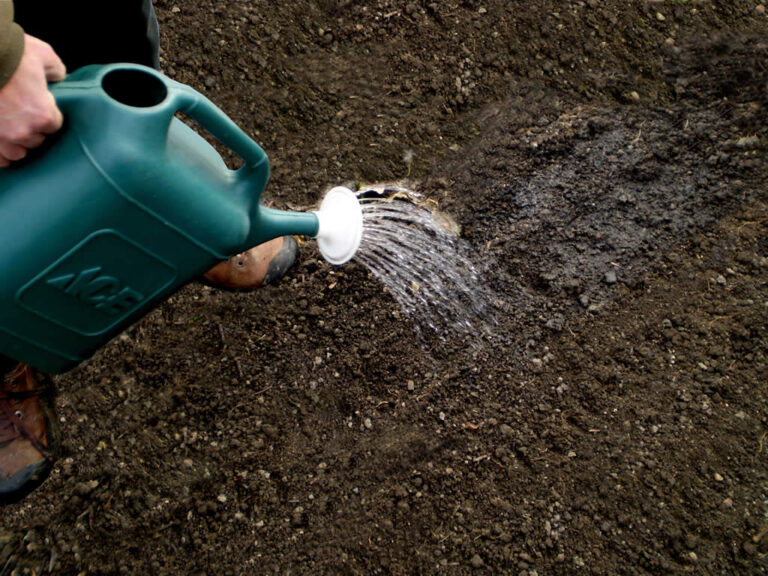To Repair the Sin of the Golden Calf

Last week in our article Don’t Worry, You Won’t Die we examined Chavah’s grave error in eating from the fruit of the Tree of the Knowledge of Good and Evil. The Torah describes her acceptance of the advice of the Nachash [Primordial Serpent] as a form of seduction, as it says in Likutei Moharan 7:3: וּכְשֶׁמְּקַבְּלִין עֵצוֹת מֵרְשָׁעִים הוּא בְּחִינַת נִשּׂוּאִין בַּקְּלִפָּה: הַנָּחָשׁ הִשִּׁיאַנִי–לְשׁוֹן נִשּׂוּאִין עֲצוֹת הַנָּחָשׁ שֶׁקִּבְּלָה הוּא בְּחִינַת נִשּׂוּאִין וְעַל־יְדֵי נִשּׂוּאִין הֵטִיל בָּהּ זֻהֲמָא (And when we receive advice from the wicked it is an aspect of marriage with the klipah: ‘The Nachash deceived me [hishi’ani]’—this is the language of marriage [nisu’in]. The advice of the Nachash that she accepted was an aspect of marriage and through marriage it put filth [zuhama] into her). R' Nachman’s words are sourced from the Gemara (Shabbat 146b): כשבא נחש על חוה… (When the Nachash came upon Chavah…). There, Rashi comments: כשנתן לה עצה לאכול מן העץ בא עליה דכתיב הנחש השיאני לשון נשואין (When it gave her advice to eat from the tree, it came upon her, as it is written, ‘The Nachash deceived me [hishi’ani]’—language of marriage [nisu’in]). It is also written in Avodah Zarah 22b: א"ר יוחנן בשעה שבא נחש על חוה הטיל בה זוהמא (R' Yochanan said: At the moment that the Nachash came upon Chavah, he put zuhama into her).
So what exactly is zuhama? It is spiritual contamination and the root source of every impure or defective thought, speech, deed, and physical infirmity.
The good news is that when Bnei Yisrael stood at Mt. Sinai to receive the Torah, the zuhama had been removed from them, as the Gemara further explains in Avodah Zarah 22b: ישראל שעמדו על הר סיני פסקה זוהמתן (Yisrael that stood at Mt. Sinai, their zuhama ceased). What an amazing revelation! The Jewish People had come very, very close to returning to Gan Eden, to the state of idyllic existence experienced by Adam and Chavah before the sin. Rashi brings to light an important ramification of this fact: ונתקנו מכל מום כדכתיב כולך יפה רעיתי ומום אין בך (And all the physical blemishes were fixed, as it is written [Shir ha-Shirim 4:7]: ‘All of you is beautiful, my darling, and there is no blemish in you’).
It is written in Shemot 20:19, a verse which describes some of the backdrop surrounding the receiving of the Torah at Mt. Sinai: וְכׇל־הָעָם רֹאִים אֶת־הַקּוֹלֹת וְאֶת־הַלַּפִּידִם וְאֵת קוֹל הַשֹּׁפָר (And all the people saw the thunder and lightning, and the sound of the shofar). Rashi comments on the words וְכׇל־הָעָם רֹאִים (And all the people saw): מְלַמֵּד שֶׁלֹּא הָיָה בָהֶם אֶחָד סוּמָא. וּמִנַּיִן שֶׁלֹּא הָיָה בָהֶם אִלֵּם? תַּ"לֹ וַיַּעֲנוּ כָל הָעָם. וּמִנַּיִן שֶׁלֹּא הָיָה בָהֶם חֵרֵשׁ? תַּ"לֹ נַעֲשֶׂה וְנִשְׁמָע (This teaches that there was not a blind person among them. And from where do we learn that there was not a mute person among them? Because it comes to teach [Shemot 19:8]: ‘And all the people answered’. And from where do we learn that there was not a deaf person among them? Because it comes to teach [Shemot 24:7]: ‘We will do and we will hear’). In other words, all of the Jewish People were healed extraordinarily in every way imaginable!
But they didn’t just experience physical healing; their healing extended well beyond their bodies. R' Chaim Vital writes in Shaar ha-Gilgulim 33: ואמנם אלו לא חטאו ישראל במעשה העגל היתה זוהמת הנחש נפסקת לגמרי כנודע (And truly, if Yisrael didn’t sin in the incident of the calf, the zuhama of the Nachash would have ceased completely, as is known). From his words, we learn that this moment in history was to have been the final test to merit entering Gan Eden itself. But what happened? The trigger for the catastrophe is described in Shemot 32:1: וַיַּרְא הָעָם כִּי־בֹשֵׁשׁ מֹשֶׁה לָרֶדֶת מִן־הָהָר (And the people saw that Moshe delayed coming down from the mountain). Rashi comments: בָּא שָׂטָן וְעִרְבֵּב אֶת הָעוֹלָם וְהֶרְאָה דְּמוּת חֹשֶׁךְ וַאֲפֵלָה וְעִרְבּוּבְיָה לוֹמַר וַדַּאי מֵת מֹשֶׁה לְכָךְ בָּא עִרְבּוּבְיָא לָעוֹלָם אָמַר לָהֶם מֵת מֹשֶׁה שֶׁכְּבָר בָּאוּ שֵׁשׁ שָׁעוֹת וְלֹא בָּא (Satan came and confused the world, giving it the appearance of darkness, gloom and confusion, implying, surely Moses is dead, and that is why confusion has come into the world. He said to them, ‘Moses is dead, for six hours [noonday] have already come (בשש = בא שש) and he has not come’). The Satan was desperate because he knew that his hold on the world was weakening rapidly and that his influence on mankind was about to cease. So what did he do? R' Yehoshua ben Levi reveals in Shabbat 89a: הֶרְאָה לָהֶן דְּמוּת מִטָּתוֹ (He showed them an image of his [Moshe’s] deathbed).
Faced with the loss of their leader, the people said to Aharon (Shemot 32:1): קוּם עֲשֵׂה־לָנוּ אֱלֹהִים אֲשֶׁר יֵלְכוּ לְפָנֵינוּ כִּי־זֶה מֹשֶׁה הָאִישׁ אֲשֶׁר הֶעֱלָנוּ מֵאֶרֶץ מִצְרַיִם לֹא יָדַעְנוּ מֶה־הָיָה לוֹ (Rise, make for us a leader [elohim] who will go before us, for this Moshe, the man who brought us up from the land of Mitzraim, we don’t know what became of him). Contrary to a popular misconception, “the people” (i.e., the עֵרֶב רַב [Erev Rav], the mixed multitude of Egyptians and other non-native Jews whom Moshe insisted be allowed to join the Jewish Nation at the exodus) did not want a replacement for Hashem. As the verse indicates, they wanted a replacement for Moshe Rabbeinu (see Shemot 7:1 where Hashem refers to Moshe as an ‘elohim’). The Ramban explicitly states this fact: הכתוב הזה הוא מפתח לדעת נכון ענין העגל ומחשבת עושיו…היו מבקשין משה אחר אמרו משה שהורה לנו הדרך ממצרים ועד הנה שהיו המסעים ע"פ ה' ביד משה הנה אבד ממנו. נעשה לנו משה אחר שיורה הדרך לפנינו ע"פ ה' בידו (This verse is the key to know correctly the incident of the calf, and the thought of those who made it…They wanted another Moshe. They said, ‘Moshe, who showed us the way from Mitzraim until here, i.e., the journeys by the mouth of Hashem through Moshe, he is now lost to us. Let us make for ourselves another Moshe who will show us the way before us by the mouth of Hashem through it’).
This explains why Hashem told Moshe (Shemot 32:7): לֶךְ־רֵד כִּי שִׁחֵת עַמְּךָ אֲשֶׁר הֶעֱלֵיתָ מֵאֶרֶץ מִצְרָיִם (Go down, because your people that you brought up from the land of Mitzraim have become corrupt). The instigators of the golden calf incident were not native-born Jews but rather the Erev Rav. This is why Hashem says that they were Moshe’s people and that Moshe brought them out of Mitzraim (see Rashi there and Shemot Rabbah 42:6). Moshe was directly criticized by Hashem for overseeing the conversion of the Erev Rav and attempting to bring them under the wings of the Shechinah because not only had they corrupted themselves, but because their corruption had spread to the Jewish People as well (as is known from reading the rest of the account in the Torah).
We see, therefore, that the core error was their mistaken notion that Moshe, the faithful shepherd (Ra’aya Mehemna [רַעְיָא מְהֵימָנָא] as the Zohar calls his soul) and true Tzaddik of their generation, could die and was, in fact, dead. But the belief that tzaddikim can die is a heretical idea because tzaddikim never die; they just shed their outer clothing called their “physical body”. They only appear to die from our frame of reference in this lower world, but from higher frames of reference in the upper worlds, it is readily apparent that they have not died at all. We acknowledge this fact every month at the time of the sanctification of the new month: דָּוִד מֶֽלֶךְ יִשְׂרָאֵל חַי וְקַיָּם (King David lives and endures forever). We can also read in the Gemara (Taanit 5b) that R' Yitzchak said יַעֲקֹב אָבִינוּ לֹא מֵת (Yaakov our father did not die).
But a worse transgression was about to unfold. When he was still on the mountain talking with Hashem, Moshe persuaded Hashem not to be so angry about the golden calf (Shemot 32:11-13), but when he came down off the mountain and saw for himself what was going on, what was his reaction? The verse reveals the horrific scene (32:19): וַיַּרְא אֶת־הָעֵגֶל וּמְחֹלֹת וַיִּחַר־אַף מֹשֶׁה (He saw the calf and the dances, and Moshe was enraged). Now Moshe understood from firsthand experience why Hashem had been so angry. The creation of the golden calf wasn’t their worst sin. Rather, the ecstatic dancing over what they had done, i.e., replacing Moshe, was far worse!
As we saw above, the Satan re-implanted the zuhama back into Bnei Yisrael through this sin. And it is still with us today. So how can we uproot it? Simply put, we must correct this series of transgressions from its source. We must believe that Moshe Rabbeinu is still alive and well, and that he is still the faithful shepherd over the flock (more on this subject in a future article, אי"ה). We must never look for a replacement for Moshe Rabbeinu. And we must dance and rejoice over Moshe Rabbeinu with as much enthusiasm (if not more!) as we danced before Hashem over the golden calf. As it is written (Shemot 14:31): וַיַּרְא יִשְׂרָאֵל אֶת־הַיָּד הַגְּדֹלָה אֲשֶׁר עָשָׂה יְיָ בְּמִצְרַיִם וַיִּירְאוּ הָעָם אֶת־יְיָ וַיַּאֲמִינוּ בַּייָ וּבְמֹשֶׁה עַבְדּוֹ (And Yisrael saw the great hand that Hashem employed against Mitzraim, and the people feared Hashem and had emunah in Hashem and in Moshe His servant). Yes, to have emunah in Hashem is not enough. We must also have emunah in Moshe His servant.
This is how we became purified of the zuhama back then, and this is how we will become purified today.






